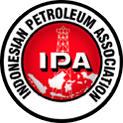Publications
The Application Of Seismic Inversion And Resistivity Inversion And Resistivity Inversion While Drilling In The Construction Of Horizontal Well - A Case Study
Proceedings Title : Proc. Indon. Petrol. Assoc., 37th Ann. Conv., 2013
The key for a successful horizontal well is reducing uncertainties of reservoir geometry. This paper is about small part of the process of reservoir characterization which an integrated process of all existing data to define the reservoir geometric (reservoir architecture), the distribution of physical parameters and physical properties of the flow of hydrocarbon reservoir. This paper only defines the reservoir geometry by making a model of seismic and resistivity inversion quantitatively and accurately before drilling (pre-model) and will be updated during the process of drilling and after drilling (post model) in the construction of horizontal well. The combination between seismic inversion in planning stage and real time resistivity inversion in well construction will help to improve well construction efficiency, reduce drilling risk, extend reservoir contact, maximize reservoir exposure, and improve reservoir development economics. The real time resistivity inversion processing is to determine a reservoir geometry (top and bottom of reservoir) mapping by using deep directional measurements in real time. All available real time measurements are inverted for a simple three layer models. An algorithm runs multiple hierarchical models, from simple to the most complex, with up to six parameters, including distance to two shoulder beds, anisotropic bed resistivity, and two shoulders bed resistivity values. Seismic data is a representation of boundary properties. The acoustic (elastic) impedance contrast between layers gives rise to reflection coefficient (RC), and seismic data is a product of convolution between these reflections coefficient with source wavelet. By using seismic inversion, we revert the whole process, i.e. removing the wavelet effect, therefore inversion process produces layer properties in terms of their acoustic impedance and other elastic parameter. These inversion results give representation of subsurface layering. By using these inversion results, we can map the top and bottom of the target formations which helps better planning on drilling horizontal wells. Performing the inversion simultaneously also allows the direct generation of the three rock properties, AI, PR (Poisson’s Ratio) and Density. These are all physical rock properties and therefore get us into the quantitative domain. These properties can then be used to determine quantitative reservoir properties such as lithology, fluid, porosity, saturation which can lead on to net pay and volumetric. This application is used in the horizontal well construction with complex geological structure and challenging stratigraphy environment such as delta or thin reservoir so that the geo-model is lack of confidence and low accuracy although it has the adequate amount of offset well around it or pilot well. This condition will cause the high geometry uncertainty in the well construction. This combination technique has been used and proved in Niru field. The paper will discuss three examples of the combination between seismic inversion and resistivity inversion while drilling in different reservoir (the formation of the wedge, thin layer with fault and the layer with changes of geological structure).
Log In as an IPA Member to Download
Publication for Free.
or
Purchase from AAPG Datapages.
